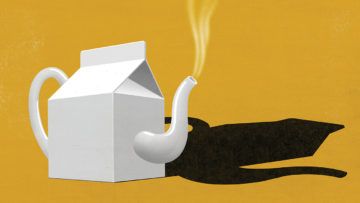Simon Willis in 1843 Magazine:
 When Vachirawit Chivaaree, a popular Thai actor, posted four pictures of cityscapes on Twitter last year with the caption “four countries”, he knew what he was doing. One of the four he listed was Hong Kong, which, as furious Chinese nationalists were quick to point out, is not a separate country, despite its special status within China. Pro-democracy activists from Hong Kong and Taiwan sprang to the defence of Chivaaree, who was subjected to a fusillade of abuse. Among their responses was a meme: cartoons of milky drinks from Hong Kong, Taiwan and Thailand “holding hands” in solidarity against authoritarian government in all its forms.
When Vachirawit Chivaaree, a popular Thai actor, posted four pictures of cityscapes on Twitter last year with the caption “four countries”, he knew what he was doing. One of the four he listed was Hong Kong, which, as furious Chinese nationalists were quick to point out, is not a separate country, despite its special status within China. Pro-democracy activists from Hong Kong and Taiwan sprang to the defence of Chivaaree, who was subjected to a fusillade of abuse. Among their responses was a meme: cartoons of milky drinks from Hong Kong, Taiwan and Thailand “holding hands” in solidarity against authoritarian government in all its forms.
The symbolism was clear. Whereas people in South-East Asia drink their tea and coffee with milk, the Chinese prefer their oolong and other brews unadulterated by dairy – or so their detractors claimed. The meme became a movement, the Milk Tea Alliance. Its members swap tips about dodging internet firewalls and avoiding arrest. The group includes Hong Kongers and Taiwanese worried about the looming shadow of the Chinese Communist Party (China considers Taiwan to be a renegade province that will one day be reclaimed). It also unites Thais critical of the country’s military government and protesters in Myanmar opposed to the junta’s coup in February. When Twitter launched a new milk-tea emoji in April, the movement received a boost and popularised the milk-tea meme. But the current symbolism of milk tea belies the drink’s complex past.
More here.
